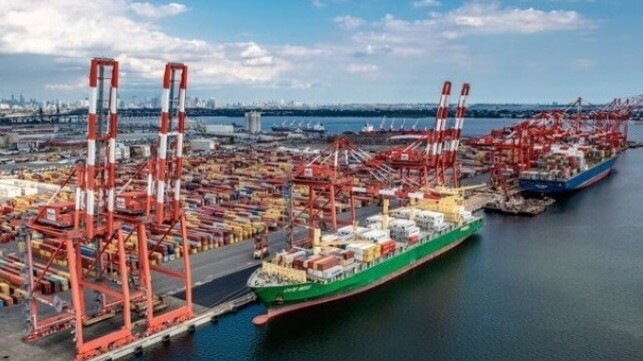Concern Grows for U.S. Dock Strike as USMX and ILA Make Opposing Statements

With the clock ticking and less than seven weeks till the International Longshoremen’s Association contract expires, both sides are taking to the media with dual statements, something they had promised not to do when the negotiations began. At the same time, major carriers are revising their statements preparing for a strike while analysts are now forecasting the long-ranging impact of even a one-week work stoppage.
“We will stand strong to win a new contract that adequately compensates our hard-working and dedicated ILA longshore workforce, and simultaneously are preparing to strike at all ports from Maine to Texas come October 1st, 2024, if a new agreement is not reached,” said Harold J. Daggett, International President of the ILA. He cautions, “There will be no extensions offered to USMX, so their time is running out.”
The ILA uses using words “impasse,” “far apart,” and “propaganda,” referring to the statements from the United States Maritime Alliance that represents the employers including terminal operators and the carriers. Responding to the latest statements from USMX, the ILA leadership wrote on social media, “Don’t be fooled,” cautioning members and the media.
The union argues that it is continuing to bargain “in good faith” to settle local contracts. The plan had called for completing all the local contracts in May so that the master contract talks could begin. The ILA cites issues at the port of Mobile, Alabama, and APM Terminal’s use of technology such as Autogate, which they “consider a clear violation of our Master Agreement.” In the latest statement, they accused APM of “dragging their feet on resolving critical issues,” which the ILA contends are not just in Mobile but in other ports as well.
USMX issued a statement on August 9 saying, “Our latest proposal would provide industry-leading wage increases, boost employer retirement contributions, offer new employees higher starting wages, raise employer contributions to local benefits, and continue to provide premier health care coverage. It also retains the existing technology language that created a framework for how to modernize and improve efficiency while protecting jobs and hours – a priority for our members and the ILA.”
The ILA is standing firm on its demands to limit automation and even roll back some elements. In addition, the union leadership in its public statements highlights the “skyrocketing profits,” of the major carriers citing freight rate increases. They ignore the dramatic declines carriers have reported since volumes dropped in 2023 and the cost increases carriers are now experiencing as they are diverting ships due to geopolitical issues.
The ILA cites inflation pressures and contends members “often have to clock in ridiculous amounts of overtime just to stay afloat.” They are demanding significant wage increases with unconfirmed reports saying they are looking to dramatically exceed the 30 percent increase awarded to the West Coast union in its 2023 contract. ILA leadership’s only public comment made in a social media posting says, “We are very far apart, particularly on the economic issues.”
The ILA says it will use its September 4 and 5 meeting scheduled to review the wage terms presented to USMX to also establish strike committees. They have filed the required notices with the government and report preparations are underway from Maine to Texas for an October 1 strike.
Consultancy Sea-Intelligence issued an analysis of the potential impact of a strike. They calculate that the East Coast ports would handle volumes of 2.3 million TEU in October, or 74,000 boxes per day. They divide it almost equally between imports and exports at 36,000 TEU inbound and 38,000 TEU outbound.
“It would take six days to clear the backlog from a one-day strike,” says Alan Murphy CEO of Sea-Intelligence. Its analysis assumes that there is approximately capacity to increase container handling by 13 percent in the ports. “If the ports have just a little more excess capacity available, this would more realistically bring this figure down to 4-5 days. However, this means that a 1-week strike in the beginning of October, would not be cleared until mid-November. If we get a 2-week strike, then realistically, the ports would not be back to normal operations until we are into 2025.”
Maersk, which had previously said it thought the chances of a strike were low, is now warning shippers that the impact could be localized or potentially more broad-based. They wrote in the latest update, “Should a general work stoppage occur on the U.S. Gulf and East Coasts, even a one-week shutdown could take 4-6 weeks to recover from, with significant backlogs and delays compounding with each passing day. “
Hapag-Lloyd CEO Rolf Habben Jansen told investors today that a U.S. East Coast strike is the wildcard in an already challenging outlook.
